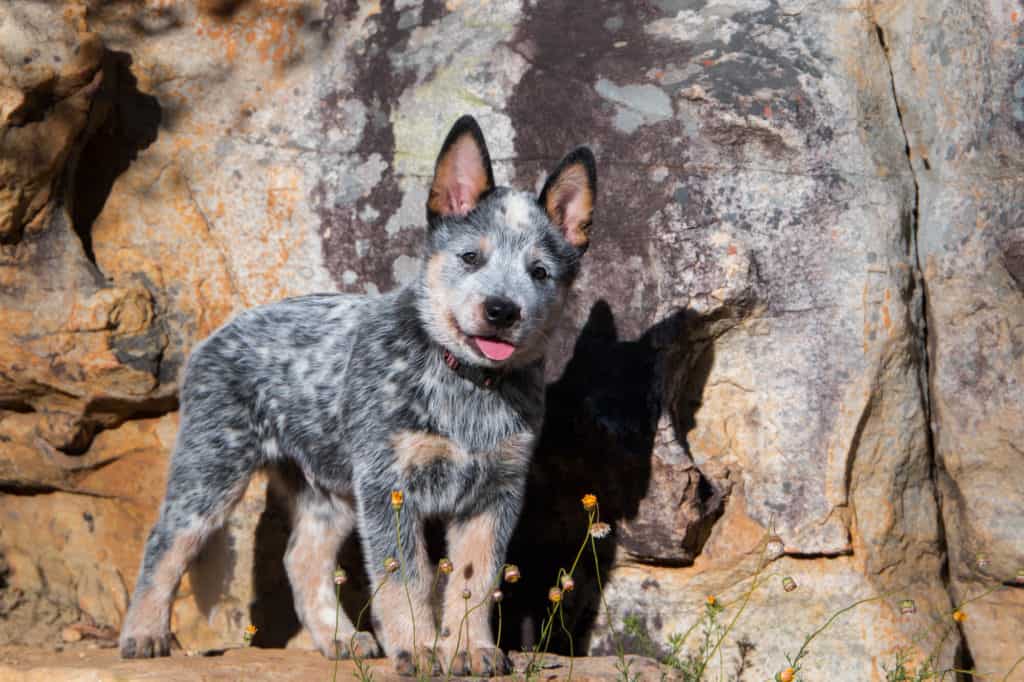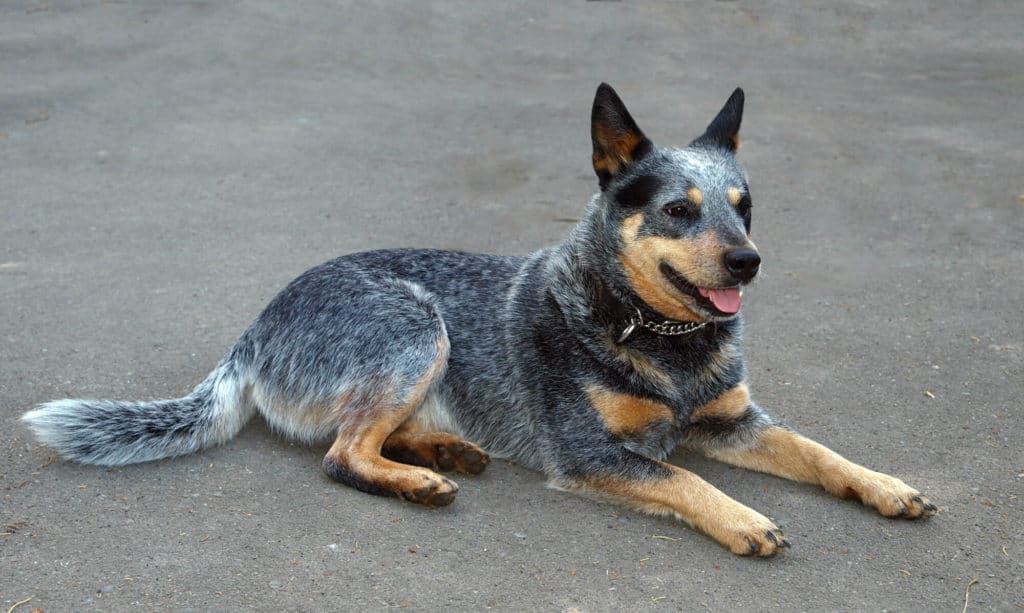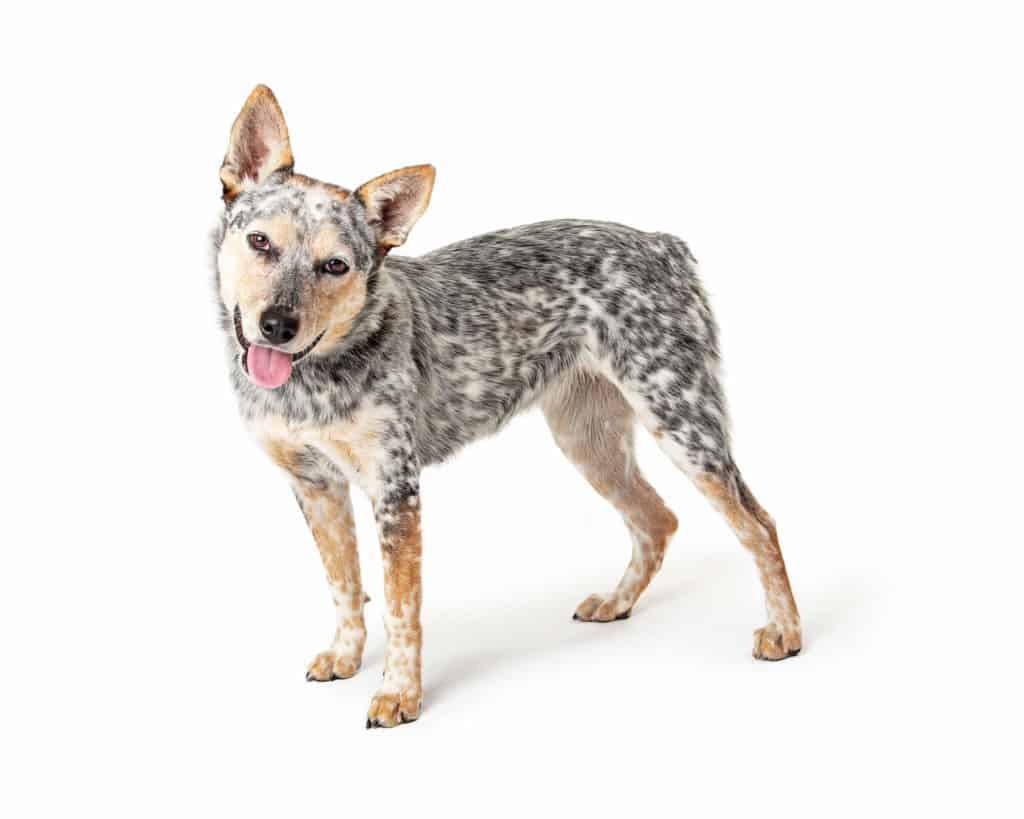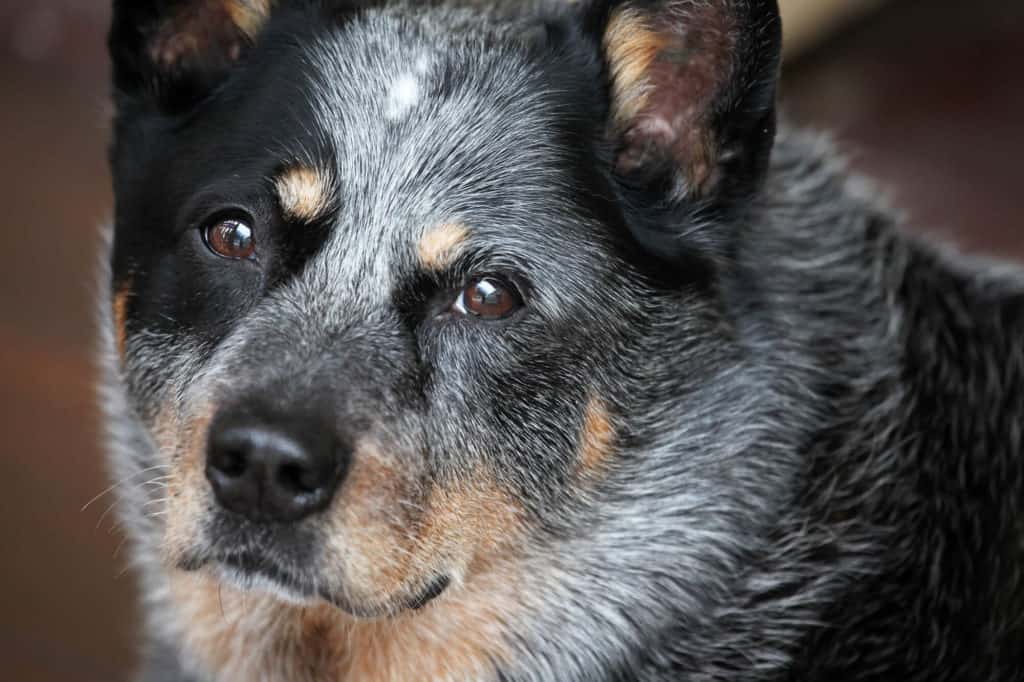Blue Heeler puppies get their color by the time they’re about four weeks old. Known as the Australian Cattle Dogs, Australian Heelers, and the Queensland Heelers, these dogs are intelligent and extremely curious.
These people-loving dogs are also super energetic and super adorable. Part of their cuteness comes from the fact that they change colors at various stages of their life.
So, if you’ve ever wondered when Blue Heeler puppies get their colors and what those colors might be, then this article is for you.

The Meaning Behind the Color
If you’re familiar with the muscular, compact build of the Blue Heeler breed, then it won’t come as a surprise to know that they’re related to the illustrious wild dogs of the outback, the Australian Dingo, from as far back as the late 1800s.
Besides being known for their strength and high energy, Blue Heelers are also famous for their color-changing coats.
According to the AKC Gazette, this change to a darker color had a practical function back when stockmen used this breed to help them look after livestock. It’s believed to blend in with their surroundings and go undetected by the cattle to avoid spooking them.
This way, the Blue Heelers could keep an eye on the livestock and make sure they’re safe and sound. At the same time, the cattle wouldn’t have been able to tell that they were being watched and, therefore, won’t get startled and injure themselves.
Yet, what about the dog’s light-colored tail? Well, here is where it gets interesting.
The pale-colored fur on the tail helped make it easier for the stockman to pinpoint the dog's exact location, even at night.

Today, a Blue Heeler’s color-changing coat is one of their best-known features.
Another interesting fact about their coat is that it’s double-layered. They have a dense, smooth, and short undercoat that helps keep them warm and snug.
On the other hand, the top layer is stiff to the touch. It’s also water and dirt-resistant and requires the occasional brushing with periodic washing every now and then.
So, not only are they a sight to behold with their rich, deep blue coat. They’re also one of the easiest dog breeds to care for and maintain when it comes to grooming.
Helpful Dog Training Resource:
For help with training your dog, you should take a look at The Online Dog Trainer by Doggy Dan. Doggy Dan is an expert Dog Trainer based in New Zealand. His online resource contains Hundreds of Excellent Dog Training Videos that will take you step-by-step through the process of developing a healthy, happy well-behaved dog.
A Guide to the Colors of the Blue Heeler
Starting from around four weeks, you’ll notice that your pups are beginning to take on a new, darker hue.
Changing coat colors isn’t completely uncommon. It happens in many breeds besides the Australian Cattle Dog (ACD). Yet, what makes this breed unique is their rich history.
These high-energy working dogs are great if you have outdoor work, like on a farm or ranch, for example.
They’re also fun-loving, loyal, and easy to train, which makes them great family dogs. Just make sure they have plenty of room to run around, play, and let out all that energy.
Otherwise, watch out! ACDs are known to be highly destructive when they’re bored or stuck indoors for too long.
White to Blue
At around four weeks old, you’ll notice your ACD gradually change colors. They’re born with white fur, except for a few dark-colored patches around their eyes.
Then, the light-colored coat of the Blue Heeler puppy begins to take on a bluish tint.
Their coat isn’t actually blue; it’s more of a layer of a black-colored coat. As a Blue Heeler puppy matures, he’ll start growing a thick bottom layer of a coat of black fur.
It’s designed to keep the dog warm while giving his coat a bluish tint.
Then, when they’re about 12 weeks old, they shed their soft, furry puppy coat. During this time, don’t be surprised if the color of their coats changes again.
It’ll start turning into an even darker shade of blue as the white hairs become less and less. Finally, their coats will fully develop between 14 and 24 months old.
It’s worth mentioning that the American Kennel Club accepts registration of the standard Blue Heeler as ACD dogs with the registration code 037.
It also accepts the speckled and mottled Blue Heeler ACD dogs with registration codes 439 and 438, respectively.
Mottled vs. Speckled

Australian Cattle Dogs come in two unmistakable coat colors: blue and red. You can categorize them even further by dividing them into mottled and speckled coat types.
The Blue Heeler breed that we’re focusing on today comes in both speckled and mottled coats, with the former being the more common type.
Blue speckled coats are known to consist of a black coat as the base color. They also have irregular white hairs sticking out in between the darker hairs, which give the appearance of a blue coat.
The more the white hairs, the lighter the blue coat will appear. Alternatively, fewer white hairs mean a darker shade of blue.
As for mottled coat types, these consist of small leopard-like spots of a lighter color over the dark base color. For most Blue Heelers, the spots typically range from a light blue color to silver-blue.
Pure breeds will sometimes have black, blue, or tan spots evenly distributed on their heads. You may also notice a black patch on one or both of their eyes in some species.
The tan color appears again on the forelegs, the inside of the back legs, as well as on the throat and chest area.
Helpful Dog Health Resource:
Note: Our Health is #1 Priority. It should be no different for your dog. But you need to help him. The Ultimate Guide to Dog Health is the answer. This handy guide will help you recognize the symptoms of the health problems above. Get the knowledge to stay ahead of these terrible issues that can rob your lovely dog from vigor and life. Help your friend make it to 14 yrs+ without pain and suffering.
The Bentley Star

A renowned characteristic of the Blue Heeler, and the Australian Cattle Dog in general, is the ‘Bentley Star.’
This mark, sometimes referred to as the ‘Bentley Mark,’ is basically a group of white hairs on the dog’s forehead.
Some varieties have just a few hairs, while others have a bunch of white hairs that form a large, white spot.
The name supposedly comes from a highly acclaimed ACD dog noted for his ‘first-class’ features. He was used as a stud dog in an effort to pass down all his notable traits, including the famed white patch of fur on his forehead.

Paul has been creating content for the dog niche for many years. The information he shares comes his first hand experience growing up in dog lovers household and then owning multiple dog breeds of his own as an adult. Paul enjoys doing the hard research to collect, analyze and present our dogtemperament.com readers with the best answers to their questions.